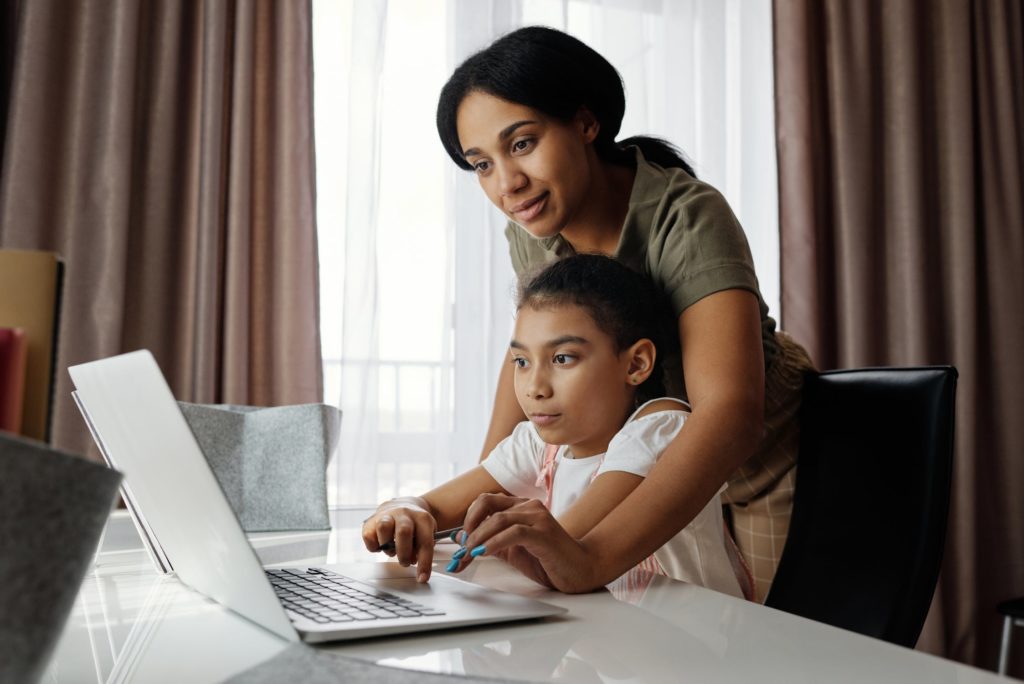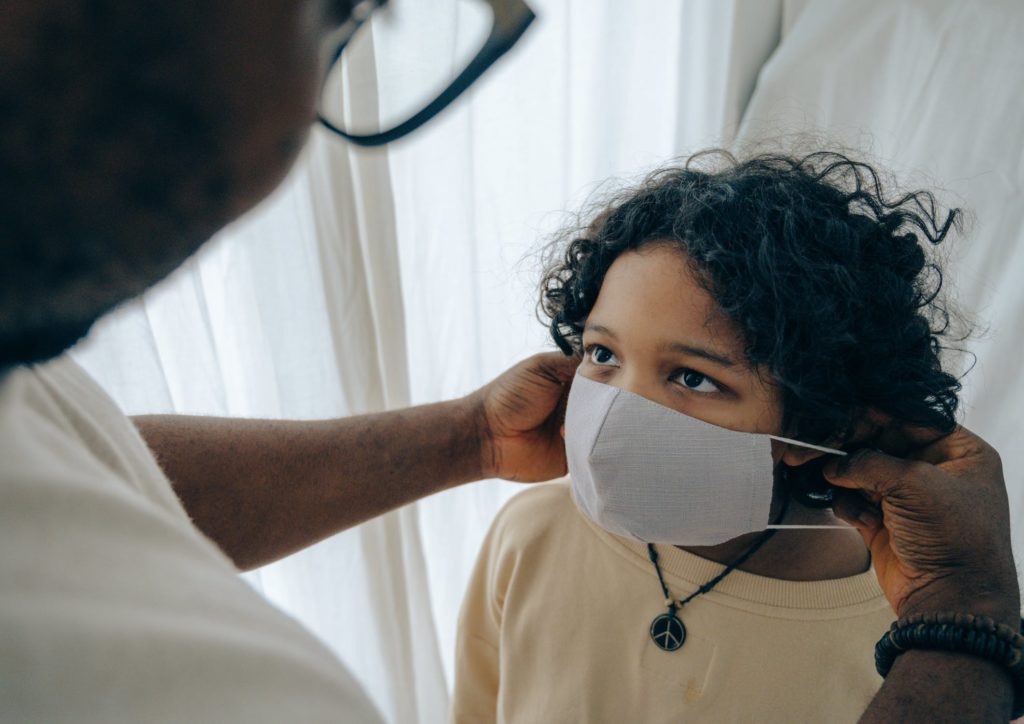This is the first in a series of blog posts we're writing about back-to-school in the time of COVID-19. At The Prepared, our team includes former and current educators, homeschooling parents, and future homeschoolers.
It's summer! And most of us are staying home (at least on this website). Whomp, whomp. With rising cases of SARS-CoV-2, parents who have been home with their kids since April are trying to figure out what to do. Is it safe to send them back to school? Will schools even open?
We spoke with doctors, psychologists, and educators to understand how parents can prepare for what’s coming this fall. Here’s what you need to know:
- Experts still don’t fully understand the risks of children contracting and spreading COVID-19 at school.
- It’s too early to know what schools will do in the fall, but parents can make choices now and prepare for different scenarios. More clarity will come as we approach autumn.
- Many schools may adopt a blended learning model, but this could vary by district.
- Parents and children should work together to manage anxiety around uncertainty—this fear is real and valid.
- If sending kids to school, take steps to minimize risks.
Let’s talk virus—what are the risks when it comes to school?
There are so many questions on the minds of parents of school-aged kids during the pandemic. (Will I have to work? What happens if schools close again? How will my child socialize?)
Most parents want to know the health risks for their child, family, and community before deciding whether to send their kids back to school. But the truth is, the data on how the virus affects children is still unclear.
A study published in Nature in June suggested that people under 20 might be less likely to contract the virus compared to adults. It also found that only 21% of infected teens showed symptoms, while 69% of those over 70 did. That’s promising, but other studies show some children experience severe illness. And then there’s the risk to teachers and parents if kids return to school.
The CDC states: “Children with confirmed cases generally had mild symptoms. Spread from or to children appears similar to adults, mainly through respiratory droplets. People without symptoms can still spread the virus.â€
So, we’re still in the dark. Plans might change as more research comes in. That’s not a satisfying answer, but it’s honest.
In the absence of clear guidance, many schools are preparing for blended learning models. Let’s explore what that means.
Blended learning: the most probable outcome
Many students who were in school last year may have the option of blended learning this fall. Jenn Breisacher, CEO of Student Centered World, has been helping teachers transition to this model. She says one of the biggest challenges right now is the uncertainty of what the fall will look like.
“A blended or hybrid model seems like the safest option,†she said. “It allows for social distancing and other safety measures.â€
In a blended model, students might attend school part-time and learn online the rest of the time. This helps reduce class sizes and allows for more thorough cleaning.
Under this model, students watch videos, ask questions, and do initial learning at home. When they come to school, they focus on practice and collaboration.
“Some people think blended learning just means more homework,†Breisacher said. “But it’s actually a shift in how learning happens.â€
She recommends parents reach out to their schools to understand the specific plan. “If teachers aren’t trained, it could look very different,†she said. “It’s important to know what your school is doing and how it might change.â€
How to decide what to do for your children
Every expert I talked to stressed that parents must choose what’s best for their families. But what are the options?
If you’re already homeschooling, you’ll likely continue. But even homeschooling has changed. Field trips and in-person specialists are harder to access now. Some families are turning to online platforms like Outschool to keep things engaging.
If you send your kids to traditional school, you have two main choices:
- Stick with the school’s plan—whether it’s blended, full-time online, or something else.
- Pull your kids out and start homeschooling.
Now, how do you decide what’s right for your family?
Consider the larger context
“In an ideal world, classroom learning is best,†said Dr. Leann Poston, a pediatrician and former teacher. “But we’re not in an ideal world.â€
Ask yourself:
- Does your child have reliable internet at home?
- How did the spring transition go? Are you getting good communication from the school?
- Can you handle the resources needed for homeschooling?
- Will your child cope with masks? What’s the local case rate and compliance with health guidelines?
Online learning isn’t always better. In some areas, it’s not even possible due to lack of internet. Even where it works, it requires more effort from both parents and teachers.
Dr. Poston also warns of risks like disengagement, stress, and isolation. These are real concerns that need attention.
Consider age and your child’s needs
Younger kids and teens face different challenges. For younger children, virtual learning can be tough because they rely on hands-on and social interaction. Teens, on the other hand, may struggle with motivation and feel stuck in the same routine.
Dr. Bita Nasseri, a mother of three, said: “Virtual learning is hard for young kids—they need touch and play.â€
Teens, meanwhile, might use the pandemic as an excuse to pause their development. Parents should help them build resilience and adaptability.
Regardless of age, parents should make learning fun and interactive. Virtual gatherings with peers can help maintain social connections.
If your child has special needs, consider schools that offer in-person services to support them.
Prepare by addressing everyone’s anxiety
Anxiety is normal right now. Both parents and kids are feeling uncertain. Experts say managing this anxiety is key to success this fall.
“Start by tuning into your own feelings,†said Dr. Lisa Pion-Berlin. “This is a tough time, and taking care of yourself is the first step.â€
Dr. Karen Gross, a trauma expert, emphasizes the importance of restoring the Five Ss: Structure, Stability, Safety, Subtlety, and Someone. These are the things trauma takes away, and they’re crucial for helping kids feel secure.
Gross suggests parents do the following:
- Stay calm and stable.
- Be honest but not anxious.
- Show confidence in handling whatever comes next.
- Validate your child’s feelings.
- Encourage expression through words, art, or music.
- Model hope and positivity.
- Be authentic and genuine.
- Listen actively and let your child speak.
Parents also need to process their own fears. This situation will likely last a while, and emotional readiness is important.
Note: If your child is worried about the virus, the CDC recommends using the National Association of School Psychologists’ guide to talking with kids about it.
What parents can do to minimize risks at school
If you and your child decide to go back to in-person school, here are some ways to reduce risks:
- Encourage kids to stay home if they feel unwell.
- Ensure hand sanitizer is available and schedule staggered breaks.
- Require masks during close contact, but allow mask breaks outdoors.
- Maximize classroom ventilation.
- Keep students in small groups throughout the day.
- Encourage washing hands, changing clothes, and cleaning backpacks upon returning home.
Make sure your child has a quality mask, hand sanitizer, and wipes for shared spaces. Preparation is key to keeping everyone safer this fall.
Artificial Grass For Pets,Green Turf Grass,Artificial Turf For Dogs,Green Potty Turf
Changshu Keyuan Eco-friendly New Materials Co.,Ltd , https://www.ailiqingky.com

